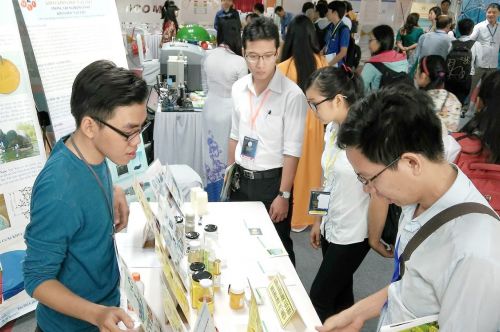The Trap Of Being Middle-Income Countries

At a seminar on the role of agriculture in the current crisis, Professor Ari Kokko from the Stockholm School of Economics urged the Vietnamese Government to pay special attention to this sector when it fleshes out the national development strategy.
In an interview with the Saigon Times on the sidelines of the seminar, which was held recently by the Institute of Policy and Strategy for Agricultural Development in Hanoi, Professor Kokko said he was puzzled at the exorbitant land prices in central HCM City and Hanoi, which exceed Tokyo’s although Vietnam’s per capita income and living standards both trail behind Japan’s. He contended that land is an invaluable but limited resource. If not managed properly, it will inflict enormous costs which far outweigh the short-term benefits from selling and leasing land. Moreover, Kokko argued that taking back land from farmers will engender serious social problems. Severe imbalances may arise, too, if Vietnam merely exports raw natural resources, he argued.
Meanwhile, at a recent seminar on exports, Dr. Trinh Minh Anh from the National Commission on International Economic Cooperation, said that despite its enormous contributions to Vietnam’s economic growth, the export sector is still trapped in the first phase of the production value chain and is only capable of selling raw and primary mineral and agricultural products. “As they are just processing commodities based on orders, enterprises contribute little added value. Meanwhile, farmers exert the greatest physical effort but benefit the least as they are in the first phase of the value chain,” he told the Saigon Times.
Dr. Tran Dinh Thien, director of the Vietnam Economics Institute, voiced his concern that without effective solutions to existing problems, Vietnam will fall into the middle-income trap. Thien predicted two important shifts in a post-crisis world with a new order.
First, low technology will be transferred to less developed nations through foreign direct investment (FDI) projects. Vietnam should be wary of this trend. “Without a clear goal, Vietnam will be tempted by “free” or cheap technology, which may lead to poorly trained human resources. In that scenario, a persistent national catastrophe will loom,” Thien said.
He deemed it essential for Vietnam to develop a 10-year development strategy which enables it to steer clear of the middle-income trap. South Korea and Taiwan have managed to avoid this trap thanks to their focus on advanced technology and skilled human resources. Conversely, despite their commendable starts and robust growth in 1970-1980, some Southeast Asian nations have been caught in the quagmire.
Thien said the second trend concerns the flow of high technology. According to him, poor countries want to and can join the race, provided they change their way of thinking. Conventional approaches, tinged with conservatism, are likely to erect barriers that will obstruct developing countries.
Vietnam probably needs to make a profound shift in its approach to development policies. According to Professor Kenichi Ohno from the Vietnam Development Forum (VDF), there is no sign to indicate that Vietnam wants to inch up the export value chain. Neither has the country made any noteworthy progress in this regard. In the 1960s, scientists warned of the severe social, economic and political problems facing resource-rich countries. They coined the term “Dutch Disease” to refer to the collapse of an entire industry due to the adverse impacts exerted by the relentless export of vast, non-renewable natural resources. After recklessly selling raw materials for a while, many countries see their natural resources shrinking. Consequently, poverty soars while these nations become frailer.


